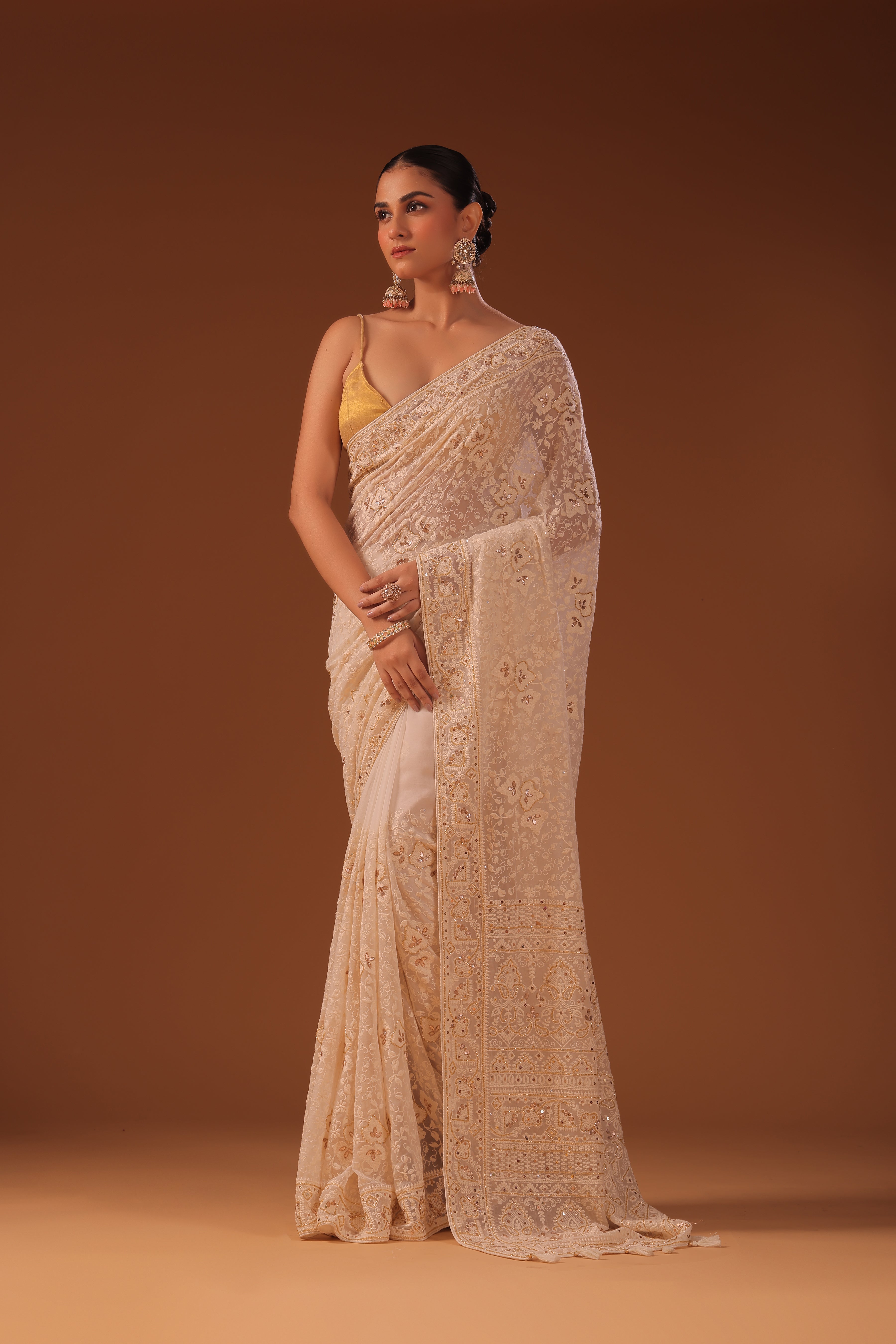A Chikankari Saree is a traditional Indian saree that is intricately embroidered with a technique called Chikankari, which originates from the city of Lucknow, Uttar Pradesh. Chikankari is a form of hand-embroidery that involves delicate and detailed threadwork, creating beautiful floral and paisley patterns on fabric. The technique is often done on fine fabrics like cotton, chiffon, georgette, and silk, which are ideal canvases for this intricate embroidery.
Key Features of a Chikankari Saree:
-
Embroidery Style:
Chikankari involves several types of stitches, including phanda, bakhiya, keel kangan, tari, jali, and zardozi (when metallic threads are used). These stitches are used to create a variety of textures, from simple straight lines to intricate floral or geometric patterns.
-
Materials Used:
Chikankari sarees are often crafted from lightweight fabrics like cotton, georgette, chiffon, and organza for a soft and breathable feel, making them ideal for warm climates. However, these sarees can also be made from silk for more formal occasions, adding a rich touch to the intricate embroidery.
-
Designs and Patterns:
Chikankari embroidery usually features floral patterns, paisleys, vines, and other nature-inspired motifs. The designs are often arranged symmetrically or in a scattered fashion, with the borders and pallu (the part of the saree draped over the shoulder) typically receiving the most attention in terms of embroidery.
-
Colors:
Traditionally, Chikankari work is done in white or off-white thread on a contrasting fabric color, creating a subtle yet elegant look. However, modern variations include multicolored threads or tonal stitching, where the thread color blends in with the fabric for a more contemporary and vibrant look.
-
Occasions:
Chikankari sarees are versatile and can be worn for both formal and semi-formal events. While they are often chosen for daytime events, they can also be dressed up for weddings, festivals, and ethnic gatherings. The light, breezy nature of the fabric makes them ideal for summer wear, while heavier fabrics like silk or velvet are chosen for more elaborate occasions.
-
Care:
Since Chikankari is a delicate embroidery technique, care should be taken when washing or handling the saree. It is often recommended to dry clean Chikankari sarees, especially if the embroidery is elaborate or includes delicate fabrics like chiffon and georgette.
Chikankari Saree’s Appeal:
-
Timeless Elegance: The hand-embroidered art of Chikankari is centuries old, and a Chikankari saree carries with it a rich cultural heritage.
-
Lightweight Comfort: The breathable nature of cotton Chikankari sarees makes them perfect for warm weather, while heavier versions can be worn for cooler seasons.
-
Versatility: Chikankari sarees can be styled in a variety of ways and can be worn for both traditional and modern occasions.
Overall, a Chikankari saree is a perfect blend of intricate craftsmanship and elegance, making it a cherished piece in any woman's wardrobe. Whether you're looking for a graceful, understated look or a more vibrant design, there's a Chikankari saree for every occasion.















